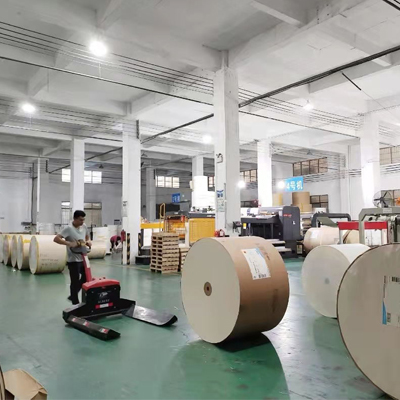- Home
- Understanding the Production Method of Duplex Board for Enhanced Manufacturing Efficiency
Nov . 11, 2024 03:39 Back to list
Understanding the Production Method of Duplex Board for Enhanced Manufacturing Efficiency
Duplex Board Manufacturing Process An Overview
The manufacturing of duplex board is a sophisticated process that combines science and technology to produce a versatile product widely used in various applications, from packaging to printing. Duplex board, known for its strength, lightweight nature, and smooth surface, primarily consists of recycled paper fibers, making it an environmentally friendly option. The following is an insight into the duplex board manufacturing process, detailing each stage involved in turning raw materials into finished products.
1. Raw Material Preparation
The journey of duplex board manufacturing begins with the selection of high-quality recycled paper and fiber materials. The most common raw materials include old newspapers, cardboard, and other paper waste. These materials are collected and sorted to remove any contaminants, such as plastic, metal, or non-paper substances. Once sorted, the raw materials are then processed through a pulping machine, which breaks down the fibers into a slurry. This pulp forms the essential base for the duplex board.
2. Pulping Process
The pulping process plays a crucial role in determining the quality of the final product. There are two primary pulping methods mechanical and chemical. Mechanical pulping involves grinding the raw materials to separate the fibers, while chemical pulping utilizes chemicals to dissolve lignin and other compounds that bond fibers together. The resulting pulp is then washed to remove impurities and sometimes bleached to achieve the desired whiteness and brightness.
3. Sheet Formation
Once the pulp is prepared, the next step is sheet formation. This is typically done using a Fourdrinier machine, a type of paper machine that distributes the pulp evenly over a moving wire mesh. As the pulp travels down the machine, excess water drains away, and the fibers begin to mat together to form a continuous sheet. The sheet is then pressed to further remove water and increase the density of the board.
4. Drying the Board
duplex board manufacturing process product

After the formation of the sheet, it moves to the drying section of the machine. Here, hot air is blown through the sheet to evaporate any remaining moisture. The drying process is critical as it ensures that the duplex board attains the right moisture content, which directly affects its strength and printability. Once dried, the board is often subjected to a final pressing to ensure a smooth and even surface.
To enhance the duplex board's properties and appearance, it may undergo a coating process. Coatings can provide additional benefits such as water resistance, improved printability, or a glossy finish. Different types of coatings, including clay, latex, or UV coatings, can be applied depending on the intended use of the duplex board. After coating, the board may be cut, trimmed, or rolled into specific dimensions based on customer requirements.
6. Quality Control
Quality control is an integral part of the duplex board manufacturing process. Throughout production, samples are tested for various parameters such as strength, appearance, and thickness. This ensures that the finished product meets industry standards and customer specifications. Any defects found during checks are addressed immediately to maintain a high-quality output.
7. Packaging and Distribution
Finally, the finished duplex board is packaged carefully to protect it during transportation. Proper packaging ensures that the board arrives at its destination without damage, allowing it to be used effectively in packaging, printing, or other applications.
Conclusion
The duplex board manufacturing process is a blend of innovation and environmental responsibility, reflecting the industry's commitment to sustainable practices. As demand for eco-friendly materials continues to rise, duplex board stands out as a practical solution for various industries. By understanding the intricate manufacturing process, stakeholders can appreciate the quality and performance of this essential material.
Latest news
-
High-Quality Bathroom Cabinet Contact Paper – Durable & Stylish Leading Suppliers, Exporters, Manufacturers
NewsJul.08,2025
-
Premium Wood Contact Paper for Desk – Reliable Suppliers & Exporters
NewsJul.08,2025
-
Premium Contact Paper for Table Top – Durable & Stylish Surface Solution from Leading Manufacturer
NewsJul.07,2025
-
Duplex Board with Grey Back - Reliable Supplier & Competitive Price Manufacturer & Exporter
NewsJul.07,2025
-
Premium White Contact Paper on Cabinets – Trusted Exporters & Suppliers
NewsJul.06,2025
-
High-Quality Duplex Board Packaging for Food Reliable Manufacturer & Supplier
NewsJul.06,2025

